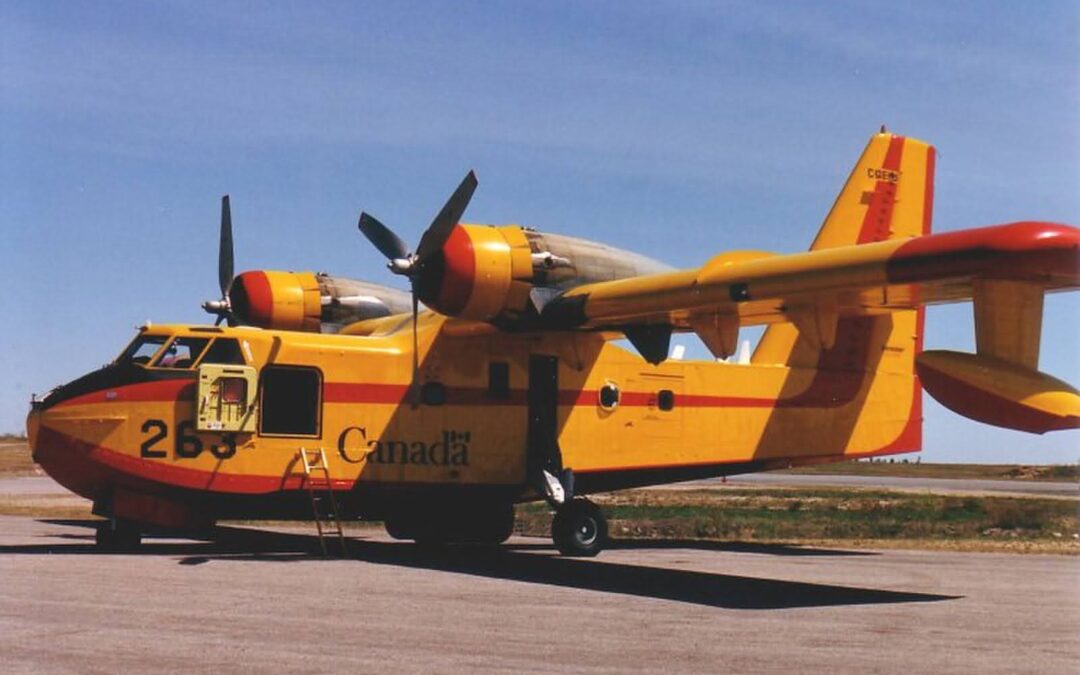The Canadair CL-215 is a hero in the world of aerial firefighting. Developed by Canadair (now part of Bombardier Aerospace), this aircraft is designed specifically for battling forest fires. Known for its reliability and effectiveness, the CL-215 has played a crucial role in saving lives and preserving natural habitats around the world.
Design and Development of the Aircraft Model
The development of the CL-215 aircraft model began in the 1960s. At that time, there was a growing need for specialized firefighting aircraft. Unlike other planes adapted for firefighting, the CL-215 was built from scratch for this purpose. It has a high-wing, twin-engine design, which helps it maneuver easily and stay stable at low speeds. This is crucial for making precise water drops over fires.
The CL-215 aircraft model is tough, with a sturdy frame that can handle the stress of repeated water scoops and low-altitude flying. This durability is essential for the tough conditions it faces. Plus, the high wing design gives pilots excellent visibility, making it easier to navigate challenging environments safely.
Amphibious Capabilities
One of the coolest features of the CL-215 is its ability to land on water. It has a hull designed for water landings and can scoop up to 1,400 gallons (5,300 liters) of water from lakes or reservoirs in just 12 seconds. This quick water-loading capability allows it to turn around fast and get back to fighting fires.
The CL-215 can operate from both water and land, giving it a big advantage. It can take off and land on short, unprepared runways, which makes it great for remote areas where there might not be a proper airport.
Firefighting Operations
In action, the CL-215 can drop water directly on fires or mix it with fire-retardant chemicals for even more effectiveness. Its ability to scoop and drop water quickly and repeatedly makes it excellent at handling large and fast-spreading fires. Its reliability has earned it the nickname «Super Scooper» among firefighting crews.
Pilots of the CL-215 go through special training to handle the unique challenges of firefighting missions. Flying at low altitudes in smoky, turbulent conditions requires precision and skill. The aircraft’s design, with great visibility from the cockpit and responsive controls, helps pilots do their jobs safely and effectively.
Versatility and Legacy
Besides firefighting, the CL-215 is used for search and rescue missions, medical evacuations, and environmental monitoring. Its versatility and durability make it a valuable asset in many roles. Even though newer models like the Bombardier 415 (an improved version of the CL-215) are now available, many CL-215s are still in operation, proving how useful and reliable they are.
The CL-215 has influenced the design of newer firefighting aircraft, setting a high standard for what specialized aerial firefighting equipment can achieve. Its legacy continues in the aviation and firefighting communities, where it is still admired and used.
FAQs
1. What makes the Canadair CL-215 different from other firefighting aircraft?
The CL-215 is specifically designed for firefighting, unlike many other aircraft adapted for this purpose. Its amphibious capabilities allow it to scoop water from lakes and rivers, making it highly effective in quick response situations. Its design supports low-speed maneuverability, essential for accurate water drops.
2. How much water can the CL-215 carry?
The CL-215 can carry up to 1,400 gallons (5,300 liters) of water. This large capacity, combined with its quick water-loading capability, allows for efficient and repeated water drops on fires.
3. What other roles can the CL-215 perform besides firefighting?
Besides firefighting, the CL-215 is used for search and rescue missions, medical evacuations, and environmental monitoring. Its versatility makes it valuable in various emergency and support roles.
4. Are there any modern versions of the CL-215?
Yes, the Bombardier 415 is a modernized and improved version of the CL-215. It offers better performance, greater water capacity, and updated avionics. However, many CL-215s are still in service due to their proven reliability and effectiveness.
5. What training is required for CL-215 pilots?
Pilots need specialized training to operate the CL-215, particularly for firefighting missions. This includes low-altitude flying, handling the aircraft in turbulent and smoky conditions, and performing water scoops from lakes and reservoirs.
6. How long has the CL-215 been in service?
The CL-215 entered service in the late 1960s and has been in continuous use since then. Its long service life highlights its robust design and effectiveness in firefighting roles.
Conclusion
The Canadair CL-215 is more than just an aircraft model; it’s a lifesaver. Its specialized design, amphibious capabilities, and proven effectiveness in firefighting make it a key player in aerial firefighting fleets worldwide. As climate change increases the frequency and intensity of wildfires, the CL-215’s role remains as vital as ever.

